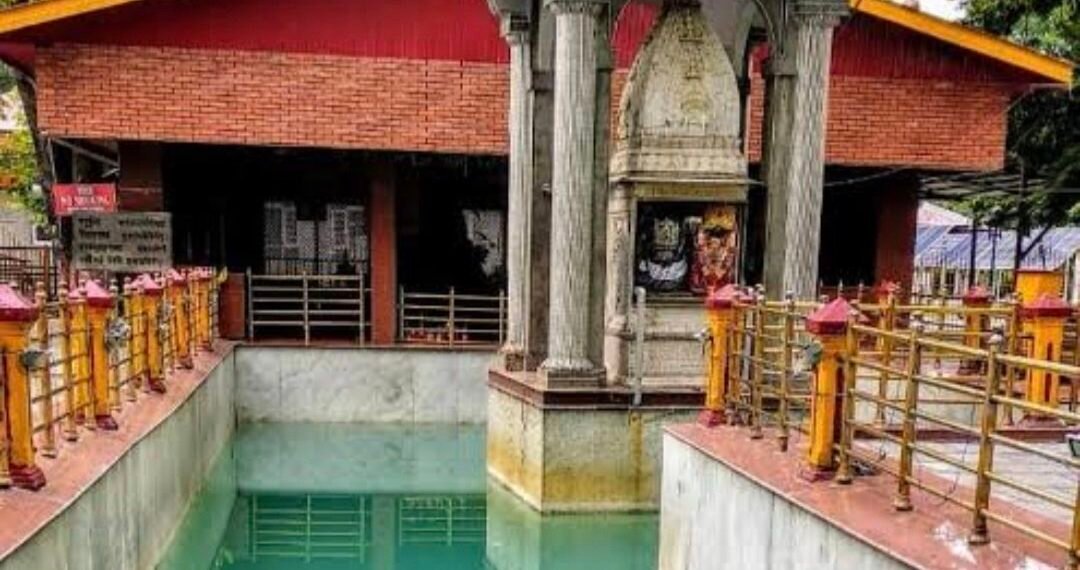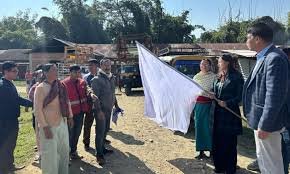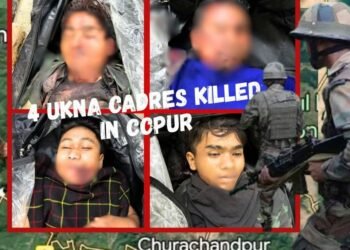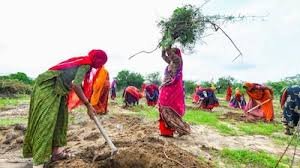In a powerful act of unity, Ganderbal’s Muslims are greeting displaced Kashmiri Pandits with open arms, reaffirming the Valley’s centuries-old syncretic culture.
BY Pravin Kumar
Ganderbal, June 1, 2025 – In a powerful display of unity and compassion, the Muslim community of Ganderbal has extended a heartfelt welcome to thousands of Kashmiri Pandits arriving for the annual Kheer Bhawani Mela at the revered Mata Kheer Bhawani Temple in Tullamulla, scheduled for June 3, 2025. This outpouring of goodwill, amplified across social media with messages of solidarity, marks a significant step toward healing decades-old wounds, catalyzed by a renewed spirit of reconciliation following the tragic April 22 Pahalgam terror attack. As Kashmiri Pandits return to their ancestral homeland for this sacred pilgrimage, the festival has emerged as a beacon of hope, symbolizing the enduring bond of Kashmiriyat—the Valley’s syncretic cultural ethos.
Social Media Amplifies Unity
The internet has been ablaze with messages from Kashmir’s Muslim community welcoming their Pandit brethren. A post by @Kashmiriyat4All on X captures the sentiment: “Our Pandit brothers and sisters, your home awaits you at Kheer Bhawani Mela. Let’s celebrate Mata’s blessings together in Tullamulla. #Kashmiriyat #Unity” (posted May 29, 2025). Similarly, @GanderbalVoiceshared: “We’re ready with flowers, kheer, and open hearts for our Pandit friends at Kheer Bhawani Temple. This is our shared Kashmir. #MelaKheerBhawani” (posted May 30, 2025). Another user, @SrinagarSoul , wrote: “To every Kashmiri Pandit coming for Mela Kheer Bhawani, know that your Muslim neighbors are here to welcome you home. Let’s rebuild our Kashmir together. #Harmony” (posted May 31, 2025). These messages, echoed by thousands across X, reflect a collective desire to mend communal ties strained by decades of conflict.
 READ: From Icon to Exile: Sharmila’s Silence in Manipur’s Dark Hour
READ: From Icon to Exile: Sharmila’s Silence in Manipur’s Dark Hour
The Legacy of Kheer Bhawani
The Kheer Bhawani Mela, celebrated on Jyeshtha Ashtami, is one of the most significant festivals for Kashmiri Pandits, centered around the worship of Goddess Ragnya Devi, also known as Kheer Bhawani, at the historic temple in Tullamulla, Ganderbal, approximately 27 km from Srinagar. Nestled amidst ancient Chinar trees and built around a sacred spring, the temple holds profound spiritual significance. Devotees offer milk and kheer (rice pudding) to the goddess, believing the spring’s color reflects divine omens—clear water signaling peace, and darker hues indicating turmoil. Legend traces the temple’s origins to the Ramayana, with the goddess choosing Tullamulla as her abode after being carried by Hanuman from Sri Lanka. This year, an estimated 80,000 devotees, including many displaced Pandits from across India and abroad, are expected to attend, undeterred by recent security concerns.
#JKP #JKPcares
We wish everyone especially our Pandit brothers & Sisters on the eve of Mela Mata Kheer Bhavani.May day be the harbinger of happiness and development in JK and entire country. Happy #Zyteh #Aetham#Melakheerbhavani#Panditbrothers#Kashmir#Kashmiriyat pic.twitter.com/NswkjF3Sn6— Adv Waseem Gul (@advwaseemgul) May 30, 2020
A History of Guardianship Through Turmoil
The temple’s survival through the turbulent 1990s, when militancy forced the exodus of nearly 1.5 lakh Kashmiri Pandits from the Valley, is a testament to the Muslim community’s guardianship. As Pandits fled amid threats and violence, local Muslims in Tullamulla took on the responsibility of protecting the temple. They swept its courtyards, maintained its modest structure, and safeguarded it from vandalism during the height of insurgency. “Our Muslim neighbors ensured Mata’s temple remained a sacred space. They kept it alive for us when we couldn’t be here,” said Sanjay Tickoo, a pilgrim who returned from Delhi for the Mela. Since militancy began to wane in 2008, this tradition of care has grown, with locals setting up stalls offering marigolds, earthen lamps, milk, and other puja items to facilitate pilgrims. This year, Muslim volunteers have been seen arranging shoes at the temple gate and assisting with logistics, a gesture that has deeply moved returning Pandits.
 READ: Tight Security for Kashmiri Pandits’ Kheer Bhawani Mela
READ: Tight Security for Kashmiri Pandits’ Kheer Bhawani Mela
Reconciliation in the Wake of Tragedy
The April 22, 2025, terror attack in Pahalgam’s Baisaran meadow, where militants from The Resistance Front (TRF), believed to be linked to Lashkar-e-Taiba, killed 26 people—including 25 Hindu tourists and a local Muslim pony rider—initially threatened to deepen communal divides. The attack sparked fear and led to Islamophobic backlash in parts of India, with Kashmiri students and traders facing harassment. However, in the Valley, it ignited a powerful counter-narrative of unity. Kashmiri Muslims swiftly condemned the violence and reached out to their Pandit brethren, emphasizing a shared commitment to peace.
Warmest welcome to our Kashmiri Pandit brothers and sisters on the sacred occasion of Mata Kheer Bhawani Mela. May this spiritual gathering bring peace, harmony, and renewed bonds among all communities. #KheerBhawani #Kashmiriyat #JKYNC #JKNC pic.twitter.com/B28zILfHdT
— Mir Mushtaq (@Mir_Mushtaq_) May 31, 2025
A Festival of Faith and Resilience
Despite the shadow of recent violence, devotees remain steadfast in their resolve to participate in the Mela, bolstered by robust security measures. On June 1, 2025, over 5,000 Kashmiri Pandits departed from Jammu’s Nagrota in 176 buses under paramilitary escort, with stopovers at Ramban for rest and meals. “Mata Kheer Bhawani is our Kul Devi, and no attack can stop us from coming home,” said Rajesh Jyotsi, a pilgrim from Mumbai. The Jammu and Kashmir administration has ensured comprehensive arrangements, including uninterrupted power, drinking water, medical camps, and a 10-bed hospital near the temple. Chief Minister Omar Abdullah, who offered prayers at the shrine earlier this week, personally reviewed preparations for the Mela and upcoming festivals like Amarnath Yatra, ensuring a seamless experience for pilgrims.
A Shared Heritage Rekindled
For Kashmiri Pandits, the Mela is more than a religious event—it’s a homecoming, a chance to reconnect with their roots and rekindle ties with their Muslim neighbors. The festival’s atmosphere, filled with the chants of hymns, the fragrance of incense, and the glow of thousands of earthen lamps, evokes a shared cultural heritage. “Meeting my Muslim friends here brings back memories of our childhood in the Valley,” said Simran Koul, a devotee from Jammu. “We used to celebrate together, and today feels like those days are returning.” The sight of Muslims assisting with rituals, from arranging puja items to lighting lamps alongside Pandits, underscores the spirit of Kashmiriyat that has long defined the region.
A Beacon of Hope for Kashmir
The warm embrace extended by Muslims to Kashmiri Pandits at the Kheer Bhawani Mela is a powerful testament to the resilience of Kashmir’s pluralistic ethos. A final X post by@TullamullaUnity encapsulates this hope: “Kashmir is incomplete without our Pandit brothers. Welcome home for Mela Kheer Bhawani. Let’s heal together. #Kashmiriyat” (posted May 31, 2025). As the Valley prepares for the festival, this act of solidarity serves as a reminder that faith and humanity can bridge even the deepest divides. The Kheer Bhawani Mela, with its blend of devotion and unity, stands as a beacon of hope, inspiring a future where Kashmir’s shared heritage triumphs over its troubled past.













